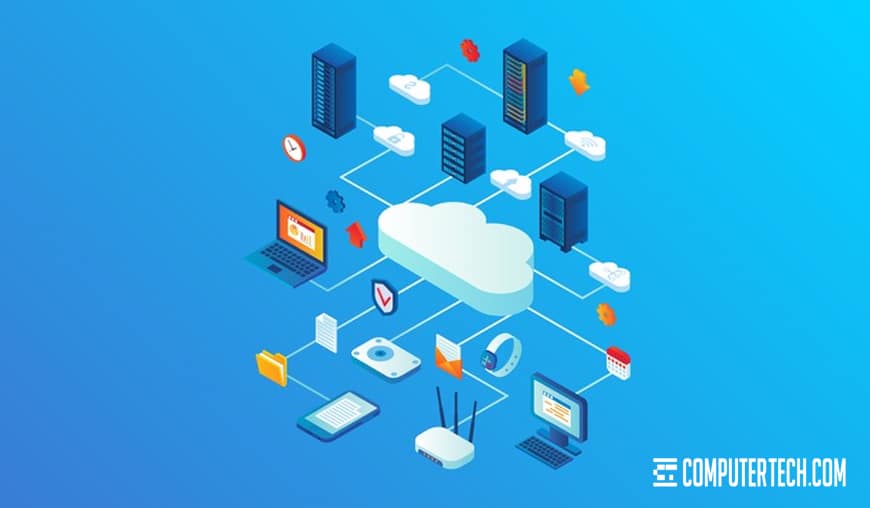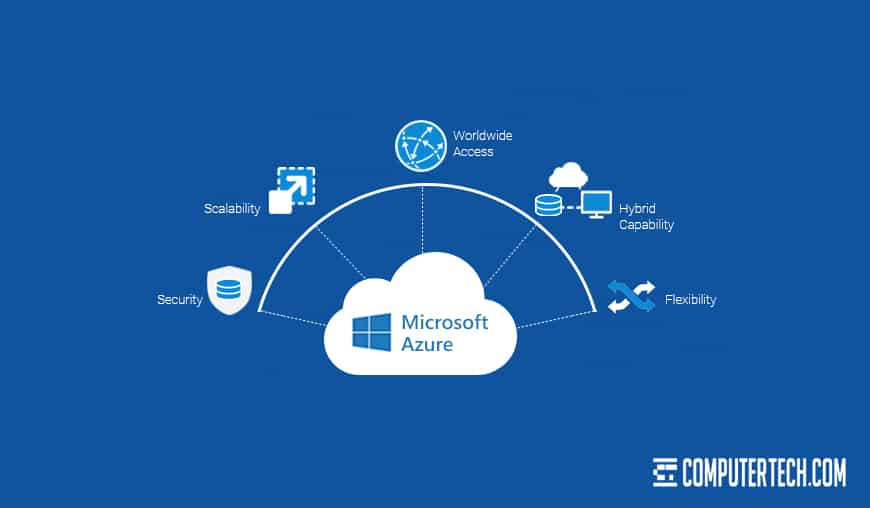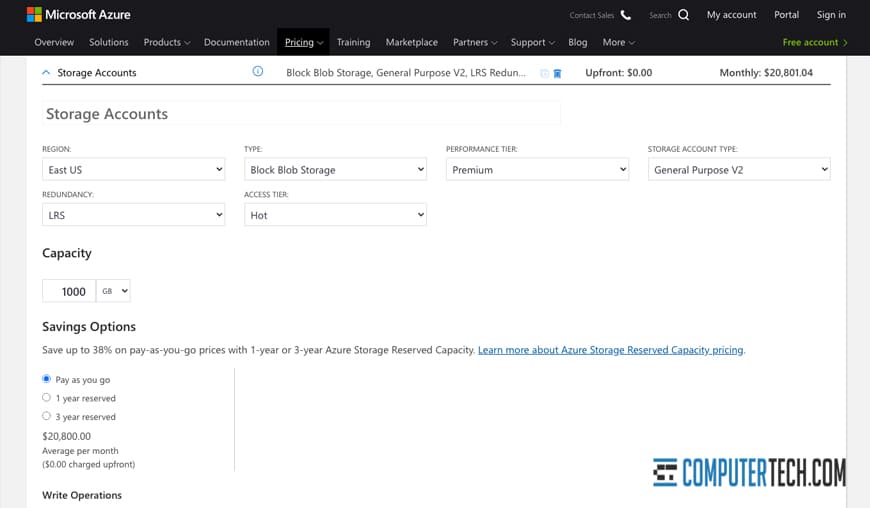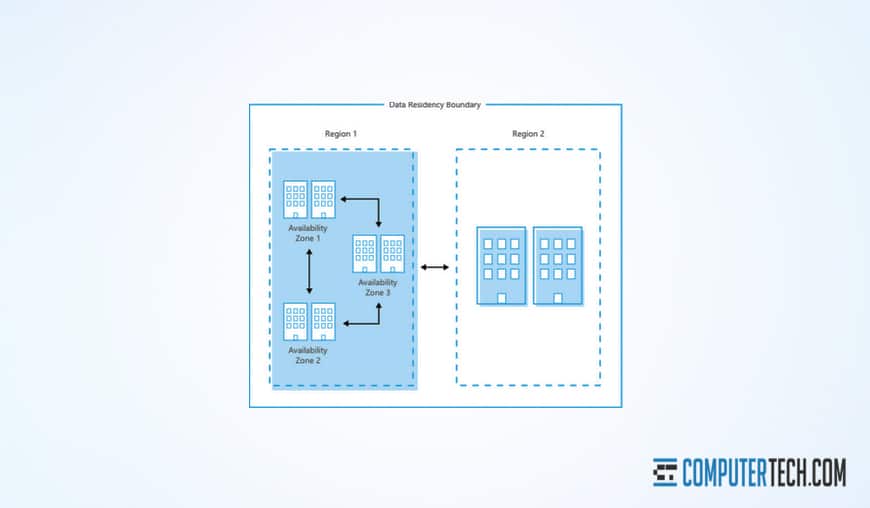-

You’ve no doubt heard about The Cloud in a dozen different contexts over the years. Cloud services, cloud platforms, cloud computing, cloud storage; these days, it seems like anything and everything is in the cloud. Indeed, practically everything IS in the cloud.
The problem is, a lot of people don’t quite understand the cloud. They know, in the abstract, that the cloud is “out there” while non-cloud choices are local. They might have some idea of the pros and cons of each option. Many people don’t really understand the differences between things like cloud storage and cloud computing. They use the terms interchangeably or just think of it all as different forms of cloud computing.
Each type of cloud service has its own definition, and we’re here to remove some of the confusion that surrounds them.
Let’s demystify the differences between cloud storage and cloud computing.
What is Cloud Storage?
Cloud storage is essentially one of the simplest applications of cloud technology available. Google Drive, Microsoft OneDrive, Dropbox; all of these services are cloud storage services. They do one thing and one thing only: they allow you to store data on the cloud.
It’s important to recognize what “the cloud” even is, in this situation. The cloud is, to put it simply, someone else’s computers. If you have a terabyte of data you need to be stored, you would have to buy a suitably large hard drive to store it locally. If that hard drive fails, your data is gone, so you want to have some kind of backup system in place as well, which means more hard drives, perhaps a RAID array, and so on. This can get expensive, particularly in terms of hardware and the man-hours necessary to test and maintain those backups.

Meanwhile, a company like Google, Microsoft, Amazon, Dropbox, or one of the many other cloud service providers has much, much more money and resources at their disposal. They can provide petabytes of storage for near-trivial amounts of money, with redundancy and backups in case of hardware failure. All you need to do is pay to access it.
Now, there are some definite benefits to using the cloud for storage.
- You don’t need to spend your own resources on setting up, testing, and otherwise maintaining the storage infrastructure.
- You can access much larger amounts of storage space than you could on your own, for much lower costs.
- You can access your data from anywhere, so long as you have an internet connection and the authentication necessary.
- Your data is generally protected from most external failures, such as hard drive failure, power outages, and drive corruption.
On the other hand, there are also a few drawbacks to using a cloud platform for data storage.
- You have to pay a monthly fee, which can (eventually, potentially) outweigh the costs of setting up your own system, depending on your usage needs.
- You require an internet connection to access your data, keep it synced, and use the system at all.
- You’re not protected from user error; if a user deletes a critical file, it’s automatically backed up by the cloud, you need a backup system on top of that.
- You are potentially more vulnerable to having your data compromised. It’s relatively rare, but hackers can’t access internal data storage if it’s not internet-facing at all, right?
So, cloud storage is simply “keeping your data on the cloud,” to put it in the simplest possible terms.
What about cloud computing?
What is Cloud Computing?
Cloud computing is a general term often used to describe any application of the cloud for any purpose, but that’s incorrect. Some people would describe cloud storage as an application of cloud computing, but that, too, is incorrect. Cloud computing is actually a specific kind of cloud service.
Cloud computing is using cloud computers to perform computational tasks. This is basically anything other than storage, including simple applications and high-end processing-intensive tasks.
For example, simple Software As A Service (SaaS) applications are ran on cloud computing. Using webmail such as Gmail or Outlook.com is a form of cloud computing, as is using Office 365 for office apps that are hosted online.

At the other end of the scale, you have cloud-based processing tasks. Microsoft’s Azure offers services like this, where you can rent time using their processing power to complete your tasks. For a couple of examples, some research facilities use this to complete complex calculations, and some video production companies use this to render videos faster than they could using local hardware.
There are some definite advantages to using a cloud computing system:
- You generally have access to much more powerful computer systems than you would have access to building infrastructure on your own, at least without tremendous expense.
- The system you access is guaranteed to be kept up to date with the latest software, typically without service interruption.
- Like with cloud storage, you can access your platform and services from anywhere you have an internet connection available and the ability to authenticate.
- You generally only have to pay to access a system, rather than having to pay for individual (expensive) software licenses for each machine or user account you’re using.
And, much like cloud storage, there are disadvantages as well.
- You can only use the platform if you have an active internet connection; a flaky connection can make it frustrating or impossible to use.
- You may need to pay per “seat” or per user account, which can add up quickly in some situations.
- You have no control over software versioning; if a new version removes a feature you used, you’re out of luck.
- You will rarely find one platform that does everything you need it to, meaning you’ll typically end up using several different cloud services and hoping they play nice with each other.
There are, to put it conservatively, a trillion different cloud computing options out there. Major companies offer large, flexible platforms with dozens or hundreds of configurable options, like Microsoft Azure, Amazon Web Services, and the Google Cloud. Other companies offer specific, narrow platforms or software; the Adobe Creative Cloud is one such example.

There are cloud options for pretty much any purpose you can think of. Cloud platforms exist for managing customer service, for handling video editing and rendering, for managing internal payroll and HR tasks, and much more. If you can think of a purpose, we can help you find a cloud computing option that can accomplish that task.
Similarities Between Cloud Storage and Computing
With a better understanding of the details of cloud storage and cloud computing, you can probably see some of the similarities. We’ll list them out for the sake of clarity.
Cloud storage and cloud computing both take place on the computer systems owned and controlled by other companies. You don’t have to worry about buying, maintaining, recycling, or otherwise handling your own server infrastructure when you use cloud systems. Your employees only need thin clients that can access the cloud systems, and the internet connection to do it. This means it’s cheaper overall, and your IT department can be much smaller as well.
Cloud storage and cloud computing both require a monthly fee to access. This is often, but not always, cheaper than the alternative. Buying and setting up servers and the associated software is a huge up-front expense, but if you can keep them going indefinitely, you only have to consider the costs of your IT staff, the power to run the servers, and so forth. If you stretch this out long enough, your costs on a per-month basis are cheaper than cloud services. However, this is rarely going to actually work out; hardware needs updates, software licenses need refreshing, IT staff is an ongoing cost, not to mention disasters that cost money to fix.

Cloud storage and cloud computing both require an internet connection to access. Setting up your own in-house server infrastructure doesn’t require anything more than in-building connections to access the intranet, whereas cloud systems require an internet connection to access, even from the office. This allows more flexibility with remote work but imposes the restriction of being unable to work where there’s no connection. Of course, this is no different than if you want your intranet to be accessible via the internet through a VPN or public-facing login, so it’s pretty similar either way.
Cloud storage and cloud computing are both more resilient to outside damage, like natural disasters, or hardware failure. If your software and data storage is on a server in your office and your office is hit with a power outage, a natural disaster like a tornado, wildfire, earthquake, or flood, your server goes offline. It can even be damaged permanently, causing irrecoverable loss of data and systems. This is, incidentally, why off-site backups are so important.
Conversely, a cloud system generally has redundancies, not just inside the data center (to protect against hardware failure) but geographically (to protect against natural disasters). All but the largest, most widespread disasters will leave a cloud system unaffected, and if something large enough happens that it takes out a significant portion of Microsoft’s data centers, for example, you’re going to likely have more pressing concerns.

Cloud storage and cloud computing both take maintenance tasks out of your hands. You don’t need to worry about updating your server hardware or software, applying software patches, fixing bugs, or any of the other maintenance tasks that are required to keep a system up and running. The exception to this is if you’re using a system like Azure for free-form computing with your own software; in these cases, you’re paying for the Platform As A Service (PaaS) and the maintenance of software, at least, falls to you. Hardware is still Microsoft’s responsibility in this situation.
Cloud storage and cloud computing both can scale up or down as your needs change. One of the largest benefits of using a cloud system is scalability. If your business grows and you need more seats, more processing power, more storage space, or more everything, you can simply contact your rep, increase your plan, and be upgraded within hours. With an in-house system, you need to plan, purchase, accept delivery of, and set up your increased hardware and software.
Differences Between Cloud Storage and Computing
While the two options of cloud services have a lot of similarities, they’re also different in some key ways.
Cloud storage generally does not do anything to your data other than host it where you can access it online. Cloud computing allows you to do things with your data. In fact, cloud computing often requires some level of cloud storage to be effective, though many systems offer basic storage for what would be considered reasonable use.
Cloud storage is passive; you can use it as an archive and rarely touch it and still get full value out of it. Cloud computing is active; if you’re not actively using the platform’s service, you’re not getting value out of it. Cloud storage holds your data, whether you’re accessing and using that data every day or just using it as a backup system. Cloud computing needs your data to work, but is explicitly all about using and transforming your data to perform whatever actions you need, from office applications to high-end computation.

Cloud storage doesn’t require much computational hardware, just hard drive space, and the software to manage it. Cloud computing needs more – potentially much more – processing power, depending on the application. This is why companies tend to offer either storage or computing, not both – unless they’re world leaders in internet services like Microsoft, Amazon, or Google.
Cloud storage is beneficial for both individual personal use and business-level use. Cloud computing is, mostly, aimed primarily at business applications. This does depend on the level of service, however. Consumer-level cloud computing services exist, like webmail, Office 365 or the Google Suite apps, and so forth. However, the majority of cloud services are business services moved to the cloud.
Which Choice is Best for You?
Knowing all you now know about cloud services, what option is right for you? The decision is highly personalized and depends a lot on your specific business and situation. We’d love to consult with you to find the right system, but first, some general tips and recommendations.
Go with cloud storage if:
- You need a place to store large amounts of data.
- You want to use it as a remote backup location for data you usually work with locally.
- You’re working with a largely remote or work-from-home workforce and need your data to be accessible from anywhere at any given time.
Go with cloud computing if:
- You have specific business tasks you can complete with a cloud platform like email, office apps, HR tasks, or other business-critical services offered by a cloud provider.
- You have a limited budget and can find cloud systems that are cheaper in aggregate than an in-house system.
- You’re working with a largely remote or work-from-home workforce and need them to be able to access your systems remotely at any given time.
Cloud systems are generally beneficial for just about any business, but it can take time and planning to figure out what (specifically) you need, and where you should get it.
About The Author
Herman
Herman is the lead team member here at Computertech.com. He’s been in IT for over 20 years and has expertise in our various IT Services including Microsoft Azure, Microsoft 365, Microsoft Teams and even Computer Security.
No related posts.
IT Support | IT Services | IT Consultant | Computer Support
Speak to a Human (856) 347-2282
- Home
- About Us
- Services
- IT Support
- Managed IT Services
- IT Consulting and Strategy
- IT Security Services
- IT Infrastructure Services and Networking
- Help Desk and Onsite Support
- Communication and Collaboration
- Specialist IT Services
- Data Backup and Disaster Recovery
- Cloud Computing
- Optimizing Network Consulting Services
- Remote Monitoring and IT Management
- Business Computer Services and Consulting
- Blog
- Contact Us
Navigation- Home
- About Us
- » About Computer Tech
- » What To Expect
- Services
- » IT Support
- » Managed IT Services
- » IT Consulting and Strategy
- » IT Security Services
- » IT Infrastructure Services and Networking
- » Help Desk and Onsite Support
- » Communication and Collaboration
- » Specialist IT Services
- » Data Backup and Disaster Recovery
- » Cloud Computing
- » Optimizing Network Consulting Services
- » Remote Monitoring and IT Management
- » Business Computer Services and Consulting
- Blog
- Contact Us
The Difference Between Cloud Storage and Cloud Computing
In need of IT Services or IT Support? Call us today at (856) 347-2282
About Us
Computer Tech is an IT Consultant \ Computer Consultant firm providing Computer Support, IT Support and IT Services in South Jersey, IT Services Delaware, IT Services New Jersey, Philadelphia Pennsylvania.
(856) 347-2282Get started:
- Pros and Cons of Outsourced SOC (Security Operations)
- How to Find and Eliminate Wi-Fi Interference in the Office
- 7 Tips to Wire Up an Office to Maximize Wi-Fi Speed
- Can You Still Recover Hard Drive Data if It’s Water Damaged?
- How New Technology Has Changed the Modern Workplace
- The Pros and Cons of Outsourcing Your IT Department
- Custom Gaming Installations for New Jersey Businesses
- Computer Installation in New Jersey – How Does It Work?
- How to Hire an IT Team to Build an Office Network
- The Benefits and Future of Remote IT Support for Businesses
Newsletter
Computer Tech, LLC.
105 Market Pl Suite 1, Glassboro, NJ 08028
(856) 347-2282
© Copyright 2025 HighTech Business Solutions. All Rights Reserved.



